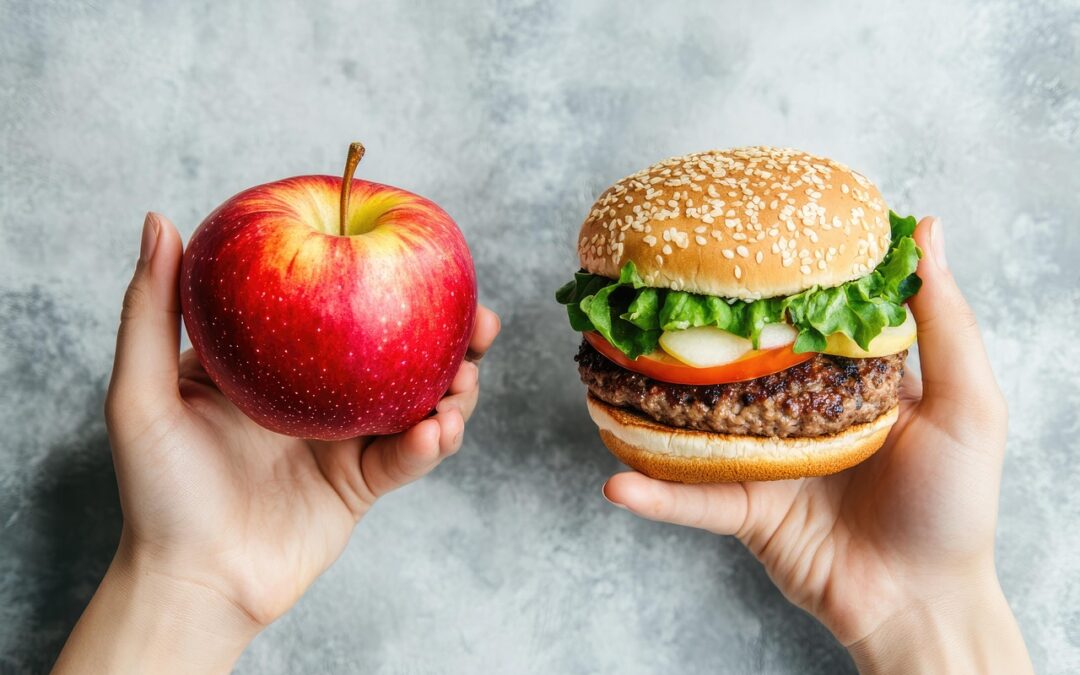Real Food vs. Ultra-Processed Food: What’s the Difference (and Why It Matters)
Eating habits today are changing fast. More people are grabbing snacks from convenience stores or ordering fast food than cooking whole meals. Sadly, this shift leads to a rise in health problems like obesity and diabetes. Understanding the difference between real food and ultra-processed food can help you make better choices. This article covers what each type of food is, how they affect your health, their impact on the environment, and practical tips for eating smarter.
What Is Real Food? Defining Natural, Whole, and Minimally Processed Foods
Characteristics of Real Food
Real food comes straight from nature. It is unaltered or only minimally changed before reaching your plate. These foods contain nearly all their natural nutrients. Think of fresh fruits, vegetables, and whole grains. Fresh meat, eggs, and dairy are also good examples. These foods don’t have fancy labels or long ingredient lists.
Benefits of Consuming Real Food
Eating real food boosts your health in many ways. It provides fiber, which helps digestion. It’s full of vitamins, minerals, and phytochemicals that support your immune system. When you choose natural foods, you avoid a lot of added sugars, fake flavors, and unhealthy fats. Studies link eating more whole foods to better energy, fewer illnesses, and lower risk of chronic diseases.
Common Sources of Real Food
Look for real food at local farms, farmers’ markets, or the organic section of your grocery store. Buying seasonally and locally often means fresher, tastier options. Stock up on fresh fruits, vegetables, nuts, and whole grains for healthy meals you can prepare at home.
What Are Ultra-Processed Foods? Unpacking Highly Processed Products
Characteristics of Ultra-Processed Food
Ultra-processed foods undergo many processing steps. They often contain ingredients you wouldn’t find in home cooking, like preservatives, artificial flavors, and colors. These foods are made to last long on shelves. Examples include sugary cereals, soda, instant noodles, and packaged snacks. Fast food also falls into this category.
Health Risks Associated with Ultra-Processed Food
Eating too many ultra-processed foods can harm your health. These foods are high in sugar, bad fats, and salt. Over time, they can lead to obesity, diabetes, and heart problems. Some research links a high intake of processed foods to certain cancers and metabolic issues. The reality is, fast, easy snacks usually come with hidden health costs.
The Role of Food Marketing and Typical Consumers
Companies target kids and busy adults with ads for ultra-processed foods. Many consumers pick these meals because they’re quick and convenient. Their marketing makes junk food seem tempting and fun. But relying too much on these options makes it harder to eat nutritious, balanced meals.
The Key Differences Between Real and Ultra-Processed Foods
Ingredient Composition
Real foods are simple. You’ll see only familiar ingredients, like apples, rice, or chicken. Ultra-processed foods pack a long list of additives, stabilizers, and flavor enhancers.
Nutritional Profile
Whole foods are nutrient-dense, giving you a good balance of macro and micronutrients. Junk foods are often loaded with sugar and unhealthy fats. They tend to be calorie-rich but low in nutrients.
Production Methods
Making real food usually involves basic methods like chopping, boiling, or baking. Ultra-processed foods are made in factories with high-tech processes that change their original form.
Why Distinguishing Between Them Matters
Impact on Long-Term Health
Eating more real food can prevent many diseases. A diet rich in whole foods lowers your chances of obesity, heart disease, and diabetes. In contrast, a diet filled with processed foods may increase these risks over time.
Environmental Considerations
Choosing real, local foods supports sustainable farming practices. It reduces pollution related to factory farming and mass production. Ultra-processed foods tend to come from big factories with larger ecological footprints.
Economic Aspects
Real foods often cost less in health care over time since they prevent illness. Supporting local farms also helps community economies stay strong. While processed foods seem cheap at first, the long-term health bills add up.
Practical Tips for Making Better Food Choices
Strategies to Incorporate More Real Food
- Read labels carefully, looking for simple ingredients.
- Shop at farmers’ markets or choose organic produce whenever possible.
- Cook meals from scratch to control what goes into your food.
Reducing Dependence on Ultra-Processed Foods
- Swap candy and chips for fresh fruit or nuts.
- Prepare healthy, quick meals like salads or stir-fries at home.
- Use frozen vegetables or pre-cut produce to save time without sacrificing nutrition.
Educating Yourself and Others
Learn about nutrition from trusted sources like dietitians or government guides. Share what you discover with family and friends. Educating yourself helps you resist marketing tricks and makes healthier choices easier.
Conclusion
Knowing the difference between real food and ultra-processed food is crucial. Whole foods provide nourishment while supporting your health and the planet. Relying less on highly processed options can lead to a happier, healthier life. Making small changes, like choosing fresh produce and cooking at home, can make a big difference over time. Start today—your body and the environment will thank you.

